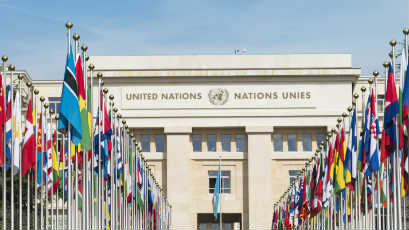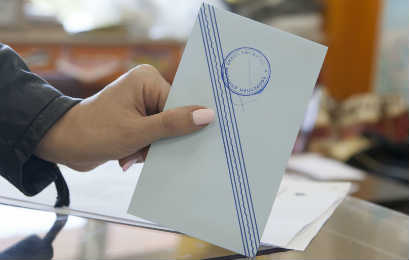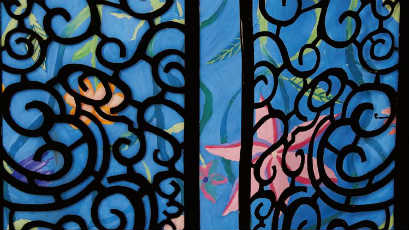Agrégateur de contenus

Across Uncharted Waters
The adventure of the “White Paper on Intercultural Dialogue” - 2008
Ulrich BUNJES

The preceding decades had made it abundantly clear that the days of culturally homogenous societies, if they had ever existed, were now definitely over. There seemed to be a choice between two evils: either to accept the emergence of parallel societies who would set their own laws in the name of tradition and identity; or to force minorities into conformity with a narrowly defined mainstream culture. Both had been tried, both had failed to produce acceptable results — neither in education, nor in urban planning, nor on the labour market. The practical problems were mounting day by day. New and old minorities protested vehemently against discrimination. The arrival of European and non-European migrants also challenged institutions and beliefs in societies which had rarely seen any foreigners before. Religious fervour was reaching new levels.
In this charged situation, the Secretariat started to explore the possibility of another approach, of a new initiative based on the commitment of the Warsaw Summit in 2005, to foster intercultural dialogue. There was some pride that the Council of Europe, ten years earlier, had been the first international organisation to mention the “spirit of intercultural dialogue” in the European Framework Convention for the Protection of National Minorities — but clearly a “spirit” was now no longer enough. We needed more than the elusive phantom ship of other ancient mariners!
Under the stewardship of Gabriella Battaini-Dragoni, then co-ordinator for intercultural dialogue and Director General, a handful of us staffers began to discuss how we might develop a reference document, a map to guide us, a vessel to carry us across these uncharted waters. And so it was that in October 2005, the European ministers of culture gave their blessing to the idea of a “White Paper”. More substantial than a short declaration but less binding than a convention, this document was to set out in clear terms the foundational values and the practical implications of a European policy for the better management of diversity.
It was a tiny crew that began preparing the expedition. We had to keep three basic parameters in mind: to prepare the text in close consultation with major stakeholders inside and outside the Organisation; to integrate the existing norms and experience — the “acquis” — of the Council of Europe into a fresh context; and finally, to achieve the endorsement of the Committee of Ministers for a potentially very complex document. These were daunting goals but we were all excited to sail the flagship, to create something relevant and innovative. And I was lucky enough to be on board, even though I spent most of my time below deck, organising the practicalities, arranging the logistics of our voyage.
The ship soon sailed out of the harbour for the first part of the journey — a scoping exercise to explore what the various partners of the Organisation thought about intercultural dialogue. With the help of not very sophisticated questionnaires, quickly cobbled together, we started gauging the position of different governments, the attitude of civil society, and the impact of religious communities and minority representatives on the question of cultural diversity. Our expectations were fairly low, given the fact that we were asking for details about a concept that many then regarded as purely abstract and rather academic.
We were wrong. Much to our surprise, we received an overwhelming response in the course of the next several months. The governments of almost two thirds of the member States replied to our initial questions, a relatively high rate for this type of request. They described their views and actions sometimes in a one-page fax, but more often in substantial documents running to 20 pages or more. We were pleased to learn that most governments strongly agreed that cultural diversity was an asset, not a threat; most believed it to enrich rather than to undermine contemporary society.
The reaction of religious communities surprised us even more. The team received some 120 well-considered and rich contributions from a wide range of religious leaders and denominations, from rabbis and imams, as well as from Christian and Buddhist communities. They all felt the implications of growing cultural and religious diversity in Europe to be relevant; they were confronting this issue every day. We had the impression that many religious leaders and organisations were relieved to finally be able to talk to the Council of Europe about it. In the past, the Organisation had rarely had the courage to officially discuss its policies with religious communities. The White Paper process clearly helped to overcome this diffidence. So expectations for future co-operation were high.
Throughout 2006 and 2007, we also used other tools to explore the views of outside partners. Seeing how enthusiastically our invitation for consultation and written contributions was being taken up did wonders for our motivation. But it was not all fair-weather sailing. There were some exceptions to the rule. One related to the online consultation mechanism, which produced spam but almost no substantial result, possibly because at that time the Organisation was not yet equipped to make full use of social media and interactive web content. The other was more serious: it was the almost deafening silence of a particularly relevant partner in the realm of cultural diversity, namely, the European Roma and Travellers Forum. A ground-breaking contribution had been promised from this quarter, drawing attention to the scandalous lack of meaningful intercultural dialogue until then, between majority populations and Europe’s most discriminated ethnic minority. But nothing came of it. Other intergovernmental organisations observed the process with keen interest but contributed no further either, at this stage.
After a year of consultation and internal debate we were finally ready to embark on the second part of the voyage. Now we had to navigate even trickier questions. Was it our task to offer a definition of intercultural dialogue, or should we try to promote a less ideology-laden term in our White Paper, like “democratic management of cultural diversity”? How could we steer clear of the trap of cultural relativism? And was it even realistic to submit to the Committee of Ministers a text of a hundred pages? Finally, we wondered if we should summarise all the written contributions, even if some of them were embarrassingly poor? And how much time did we actually have to conclude the process?
It did not take long for a viable framework to emerge, which did not fundamentally change until the very end of the process. We knew the document had to reach a range of readers, offering even the most uninitiated easy access to a complex concept, without ignoring sophisticated practitioners and knowledgeable experts who had sometimes worked on related issues for years already. We also knew it had to be strong enough to carry us to the end of this voyage and provide all fundamental definitions along the way. It had to elaborate on human rights and democracy as the underlying values; it had to explain the various dimensions of a policy supporting intercultural dialogue; and finally it had to formulate practical recommendations in the key areas of governance and international relations, of citizenship and participation, of education and the creation of a space for dialogue in civil society. Finally, it was clear from the start that we would need to insist on the responsibility of all social players. Leaving intercultural dialogue primarily in the hands of public authorities, as some civil society organisations had suggested, would surely be a recipe for failure.
Confident that we were in safe waters, at least from a conceptual point of view, and having secured the support of an excellent expert to help us prepare a first draft in July 2007, we slowly steered our White Paper towards the Committee of Ministers. Navigating our way through these straits was not easy. Beginning in September 2007, the relevant sub-committee spent thirteen meetings in all — five regular ones plus eight special meetings — to go through the text in painstaking detail. By then we had already fallen behind our deadline by several months, as might have been expected, but keeping on course was now as vital as retaining support for the project at the highest levels of the Organisation. It proved to be a long and daunting haul. After two years of work we were only just beginning to produce results. People had started questioning our mission, querying our methods. What was this White Paper anyway? Where was this ship supposed to be heading? I was finding it increasingly difficult to stretch the credibility of colleagues and ask for their patience. It is very awkward being a crew member on a phantom vessel.
Eight months later, however, agreement on the 70-page draft was at last reached. This collective effort alone could possibly place the document in the same league as some of the most fundamental achievements of the Council of Europe. The unwavering support of the chair of the rapporteurs group was indispensable; she never turned down a request to convene an extra meeting and tirelessly talked about the project with her colleague ambassadors informally.
It is also worth noting how closely involved the member states were during this part of the voyage. Their commitment was unwavering and broad based. The final version of the White Paper bears the traces of hundreds of amendments, tabled by almost all diplomatic representations. These amendments in turn reflected the specific interests and priorities of the governments concerned, of course, which became most obvious during the drawn-out debate on the key term of “minority”. It was no trivial exercise either, particularly in view of the rights that minorities have under certain international instruments. It was very important that member states finally agreed on a definition for the purposes of the White Paper, without setting a precedent.
One of the most frustrating experiences during this phase concerned my plan to provide examples of good practice as a practical form of recommendation. All along the way, our team had invited the stakeholders to send us “dialogue projects” that deserved international attention and a mention in the White Paper, and we had received more than one hundred of such suggestions.
But what exactly is an “example of good practice”? Maybe I had been too naïve in proposing their inclusion. Only halfway through the process did we begin to seriously discuss the criteria we were using, and in doing so discovered that “good” or “best” practice is difficult if not impossible to define in all areas, and not just those concerning intercultural dialogue.
Furthermore, such evaluations could become a political minefield, as we found out just days before the final approval was given by the Committee of Ministers. Seemingly out of the blue, two delegations mutually criticised two projects we had selected from their countries. Both projects related to national minorities who had long ago emigrated from the neighbouring state, and the two governments concerned were not currently on good terms.
By only looking at the merits of the project at a local level, we had not seen this conflict coming. The clash escalated, no compromise was possible. More and more delegations raised the issue of the lack of a clear definition. The matter became too complex for debate, and the gangplank was finally hauled out to avoid outright mutiny. In the end it was agreed that every one of the two dozen or so examples of so-called “good practice” were to be removed from the text. I felt very sorry especially for some of the smaller projects, which were visionary and certainly deserved international publicity.
Probably the most hotly debated section of the White Paper was the short chapter on the religious dimension of intercultural dialogue. This part challenged us with new horizons — not, of course, with reference to the freedom of thought, conscience and religion; nor in relation to the issue of political support, as against responsibility, for the dialogue between religious communities themselves. But what was entirely new for the Committee of Ministers were the few short paragraphs included in the text on the relations between public authorities and religious communities. We were able to avoid hitting any rocks because the university professor who had drafted this particular passage came from the country most committed to laïcité: France.
Finally, on 30 April 2008, the Committee of Ministers opened the way for the formal “launch” of the document and the Ministers of Foreign Affairs gave it their blessing a few days later. Endless relief on the side of the crew and all external authors! Our ship had reached safe harbour at last!
Or had it?
In reality, the proof of such a project lies in the aftermath, in its practical application, not in the years of preparation for the launch. Whether a ship is seaworthy or not depends on far more than its maiden voyage. How has the White Paper fared since it set sail? How well has it done?
Here again we were positively surprised. The White Paper was very well received by all stakeholders who had contributed to it during the consultation phase. This, in itself, was a small miracle. Maybe it was a tacit admission of the courage required of the Council of Europe to tackle such a difficult subject; maybe it was a sign of appreciation for its openness to listen to civil society. However, judged by certain demands and suggestions formulated by a number of non-state partners, the final version may have looked rather bland and non-committal to many. A clear follow-up mechanism was conspicuously absent from the final document. Yet, the substance of the text must have hit the right note, because it triggered a wider reflection on the challenges of cultural diversity.
Another positive surprise were the efforts made by member States to ensure that the White Paper would be accessible to a wide readership. To date we have seen more than twenty different language versions of the document — including Arabic, Hebrew and Belarusian. This too is a fairly significant success, given the volume, the complexity and the non-binding character of the text.
And there was more. Internally, the White Paper debate triggered or supported a number of spin-off programmes like the “Intercultural Cities”. And externally, the European Commission took the document on board as part of its European Year of Intercultural Dialogue. Soon after its launch, the first UN High Representative for the “Alliance of Civilizations”, the former Portuguese President Jorge Sampaio, officially acknowledged the White Paper as the reference text of this loose global platform. In 2011, a Group of Eminent Persons recommended in its report on “Living Together - Combining diversity and freedom in 21st-century Europe,” that a regular forum should be created for assessing the development of intercultural dialogue in Council of Europe member states, with the White Paper as a reference document to gauge our progress. The suggestion has yet to be realised.
Today, Google lists 568 entries for the White Paper on the server of the Council of Europe alone, and over 8 500 links worldwide. Not bad for a little vessel, though not spectacular either. Time is travelling fast. In 2016, one could again hear the question being raised in the Committee of Ministers regarding what intercultural dialogue really is, and whether it is not an out-dated concept.
Maybe we need to set off on a new voyage soon?




